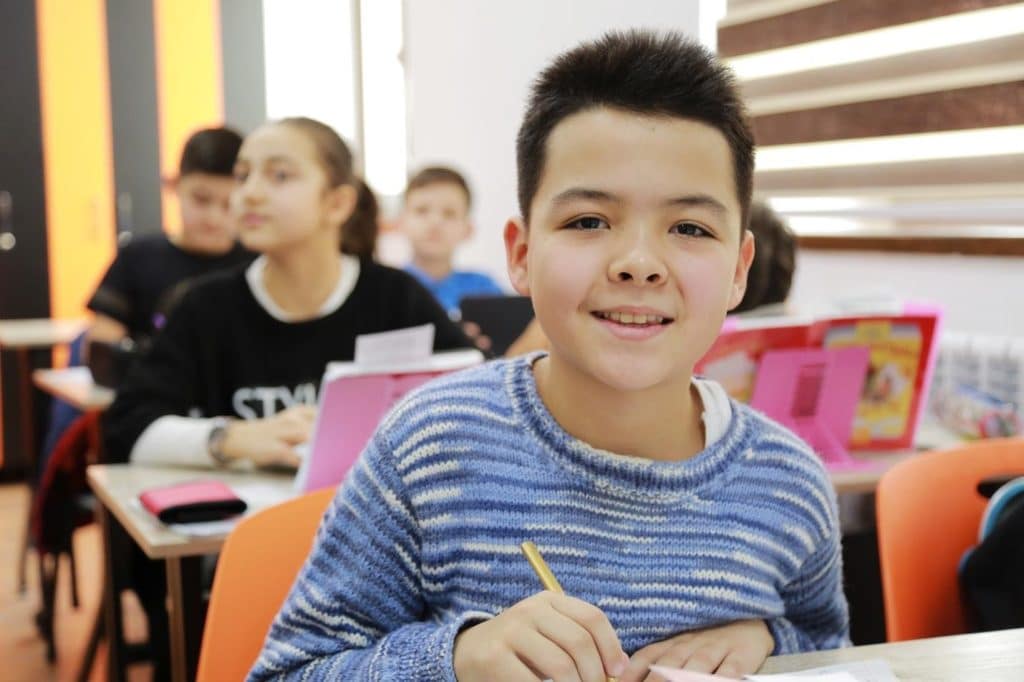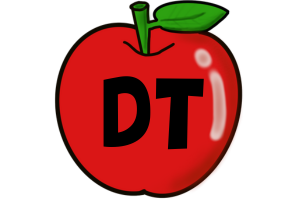Young students are no different from adult students; they equally want to feel acknowledged and welcomed. As an educator, you must understand that you have the power to positively impact their day by simply greeting them at the door or in class.

The exercise of creatively greeting students at the door or in class is not particularly a novel idea. Most of you probably remember a school teacher who took out time to share a quick handshake or a kind word as we entered the classroom. Such a consistent and authentic welcome determines the entire class’s tone and sends the message that every student is valuable and appreciated.
If you don’t know how to accomplish that, fret not.
In this article, you’ll learn about a few creative ways to say hello in class to impact the day of your students positively.
Classroom Management Begins at the ‘Hello’
Numerous scientific researches support the notion of investing a few moments every day to greet each individual student at the door. R. Allan Allday, a behavior analyst, has studied how this simple gesture affects behavior and engagement in the classroom. The study revealed an upsurge in student engagement from forty-five percent to seventy-two percent and a decline in the time it seized for students to get on task.
When you greet or creatively say hello to your students, you’re modeling the conducts and behaviors that you expect from them in the classroom. And more importantly, you are exhibiting adult behaviors expected from them in the larger community.
So, in the here and now, a greeting can also act as an opportunity to intercede in case you notice any off behavior in any student.
Dos & Don’ts of Greeting Students
Greeting students in the class or, even better, at the door can help you build meaningful relationships with your students, which later translate into an overall more productive classroom. Nonetheless, ensure that your actions are delivered with a light and sincere intention. When students realize that they’re truly welcome in your classroom, they’ll respond in ways that might surely surprise you.
| Dos of Greeting Students |
|
|
|
|
|
| Don’ts of Greeting Students |
|
|
|
|
|
Remember, building a community begins at the classroom door, and students who know what to anticipate in your class have higher probabilities of being engaged learners.
8 Creative Ways to Say Hello in Class!
Here are a few ways you and your class can creatively say hello to each other and begin the day on a positive note:

#1: Matching card greeting
- Provide every student a card on which you have transcribed part of an equation. For instance, one student gets a card that says “70 – 50,”; and another student receives one that says “= 20.”
- Ask your students to move around the class with the aim of finding their cards counterpart.
- When two students find their counterpart, tell them to greet each other. A simple “Good morning” or “Hello” is fine.
- Tell students to sit with their partners in the order of an equation and ensure it’s visible to the rest of the circle. For instance, the student with the “70 – 50” card sits on the right side of the student with the “= 20 cards.”
- Go around the circle, and tell students to announce their equation whilst holding up their equation cards so the rest can see.
#2: Doing the wave
- Tell your students to stand with one arm extended towards their classmates on either side, with palms touching or palms facing but not touching.
- You do the same but be the first person in the line.
- Turn to the student on your left and say, “Hello, Maria.” Maria greets you back.
- Then, you both raise your arms in a wavelike motion.
- Next, Maria turns to the student on her left and greet each other in the same way, and with the same wave motions.
- Continue this until the wave makes its way around the entire circle.
#3: Spider web
- Make everyone stand in a circle and join them.
- Hold a ball of yarn, and greet a student standing across you.
- Gently roll the yarn ball to that student whilst firmly holding on to the end of the yarn ball.
- Tell the student who gets the ball of yarn to greet another student across the circle and roll the ball to the person—at the same time, ensuring to hold onto the unraveling strand of yarn with one hand.
- Continue this cycle until everybody has been greeted, and the ball of yarn has created a web across the circle.
- To untangle the yarn web, tell students to greet each other in reverse until the yarn ball is wound up again.
#4: Flighty flight
- Provide the first greeter a paper plane. Tell them to choose somebody in the circle, standing across them, and greet that person with an affable “Good morning, ______!”
- Then, tell them to gently toss the paper plane towards them so that it lands in front of them. Make sure to remind students to throw the plane to ensure nobody is hurt carefully.
- Let students know that only the person being greeted can retrieve the plane.
- Repeat this cycle until everybody in the circle has been greeted.
#5: Say your name
- The entire class starts chanting the buzzword: “Say your name, and when you do, we will say it back to you!”
- You can be the first person to start by saying your name. Then ask the person standing next to you to do the same.
- The student then says her or his name aloud: Jack!
- In unison, the entire class repeats the name: Jack!
- The entire class keeps chanting the refrain till the greeting continues around the circle.
#6: Hullaballoo chart
Create and post a chart that looks like this:
| Ways To Move | Ways to Greet | Topics to Share |
| Skip | Handshake | Favorite book |
| Swim | High five | Favorite dessert |
| Tiptoe | Link elbows | Favorite movie |
| Walk like a zombie | Pinky shake | Favorite activities |
- Say out a direction from every group on the chart. For example, “Skip, high five, favorite dessert.”
- Then ask your students to skip around the classroom to find a partner and greet them with a high five.
- Next, ask them to tell each other their favorite dessert.
- You can ring a bell to signal a new round.
- Say out three new directions.
- Make the students move, greet, and share in the designated ways.
- You can continue this for as many rounds as you wish.
#7: The number of greetings
- Cut up a bunch of 3″ x 3″ inch squares, and on each different square, write the numbers from 1 to 10.
- Put the numbered squares into a basket.
- Greet your students as they come into the classroom, and tell them to pick a number from 1 to 10 from the basket that shows how they are feeling right now – 10 (I’m feeling good, focused, ready) to 1 (I am grumpy, tired, would rather be at any other place else).
- When everybody’s seated, tell the students to hold up their numbered cards to get a feel for where they are and how they are feeling.
- If you see many low numbers, you may want to do an energizing activity or give a pep-talk to help everybody focus.
#8: Personalized greetings
Once in a while, give every student of yours a personal greeting that states something you value and appreciate their presence in the class. One way to make this activity this less intimidating is to make a master list of thirty or forty appreciation responses in Docs or Word ahead of time. You can then simply write in the students’ name, print out the greeting, and cut them into strips. For example:
- Dear Alya, I realize that talking in class isn’t your preferred choice. Therefore, I truly appreciate your contribution and participation in small group work.
- Dear Adam, I have noticed that you have been on time in class for the past two weeks. I appreciate the effort you are putting in to make this happen.
Importance of Greeting Students
Greeting students holds significant importance in establishing a positive classroom environment. When educators take the time to greet their students, it sets the tone for the entire day of learning. This simple act helps build rapport, foster a sense of belonging, and create a supportive learning community. By acknowledging each student individually, educators show that they value and appreciate their presence in the classroom. Students feel seen, heard, and acknowledged, leading to a greater sense of engagement and motivation.
Benefits of Greetings
The benefits of greeting students extend beyond the initial interaction. Research has shown that consistent greetings can lead to increased student engagement, improved behavior, and better academic performance. When students are greeted warmly, they feel more connected to their teacher and peers, creating a positive classroom culture. Moreover, regular greetings contribute to the development of strong teacher-student relationships, which in turn enhance communication and support students’ social-emotional well-being.
Adaptability for Different Grade Levels
Creative greeting strategies can be adapted to suit the needs and developmental stages of different grade levels. For elementary students, interactive activities like matching card greetings or doing the wave can be effective. Middle school students may appreciate greetings such as the spider web or flighty flight, which incorporate movement and teamwork. High school students can benefit from personalized greetings or activities that promote conversation and sharing. It is essential to modify the greetings to be age-appropriate and meaningful for each grade level.
Research and Expert Opinions
Numerous studies and experts in the field of education highlight the positive impact of greeting students. Research findings consistently show that greeting students at the door improves behavior, engagement, and academic performance. Experts emphasize that greeting students is an essential component of building positive classroom relationships and creating a safe and inclusive learning environment. Their insights underscore the significance of greetings in supporting students’ social and emotional well-being and fostering a positive classroom climate.
Incorporating Cultural Diversity
Recognizing and respecting cultural diversity is crucial when implementing greetings in the classroom. Teachers should consider incorporating greetings that are inclusive of various cultural backgrounds and traditions. Encouraging students to share greetings from their own cultural heritage can promote a sense of pride and respect for diversity within the classroom. By embracing and celebrating different greetings, educators create an inclusive environment where all students feel valued and respected.
Encouraging Student Input
Empowering students by inviting their input and ideas for greetings promotes a sense of ownership and agency within the classroom. Students can contribute their creativity and cultural perspectives to develop meaningful greeting activities. This involvement not only enhances engagement but also fosters a sense of belonging and shared responsibility in the classroom community. By including student input, educators create a more student-centered and collaborative learning environment.
Long-Term Impact
Consistent and meaningful greetings have a lasting impact on students’ academic experiences and future relationships. Positive experiences with greetings in the classroom contribute to students’ overall social and emotional development. Greetings help create a positive classroom culture that values respect, kindness, and inclusivity. Students who experience warm and welcoming greetings are more likely to develop strong connections with their peers, teachers, and the school community, leading to a positive school experience and long-term academic success.
Extension Activities
In addition to daily greetings, educators can extend the concept of greetings to other aspects of the classroom routine. Transition times, special events, or community-building activities can all incorporate greetings to foster a positive and connected classroom environment. Greetings can be integrated into morning meetings, group discussions, or project-based learning activities. By weaving greetings into various aspects of the school day, educators reinforce a culture of respect, belonging, and positive relationships among students and with their teacher.
Closing Note
As with most facets related to teaching and dealing with students, it is vital to understand that consistency is the key. These strategies or ‘creative ways to say hello’ might work better on some days or weeks than others. Nonetheless, the most crucial thing is to keep doing them!
The outcomes might not always be evident, but believe us, your students will notice and appreciate your consistency.
For more teaching tips and tricks, head to the blog section of our website.



1 Comment